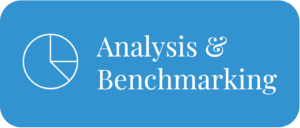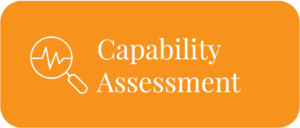Procurement Analytics Expertise
at Your Fingertips
PI Data Analytics maintains world-class
expertise in Procurement analytics.
Frequently Asked Questions
-
What is procurement analytics?
Procurement analytics is about turning raw spend data into business intelligence. It’s not simply reporting on who we bought from, but applying advanced tools — from machine learning to cognitive analytics — to anticipate risks, optimise supplier portfolios, and guide strategic sourcing.
At its best, procurement analytics delivers:
- Descriptive clarity – what we’ve spent, where, and with whom.
- Predictive foresight – what’s likely to happen next in markets, pricing, or supplier risk.
- Prescriptive direction – what actions to take, from sourcing strategies to contract terms.
- Cognitive reach – insights drawn from unstructured sources like contracts, news, or ESG reports.
Purchasing Index (PI) enables this shift, turning procurement data into real-time intelligence that elevates procurement from a transactional function to a strategic enabler.
-
How does data improve procurement decision-making?
Decisions improve when they are based on facts, not instincts. Data equips procurement teams to:
- Evaluate suppliers objectively – replacing subjective preferences with evidence on performance, risk, and financial stability.
- Balance cost, risk, and value – using total cost of ownership models, not unit price.
- Anticipate shifts – scenario planning and predictive analytics prepare us for market volatility before it hits.
- Align stakeholders – decisions made on a common fact base create buy-in across finance, operations, and executive teams.
PI provides the clean, categorised, and benchmarked data needed to de-risk procurement decisions and align them with enterprise priorities.
-
What’s the difference between spend analysis and savings tracking?
- Spend Analysis answers “Where is the money going?” It’s diagnostic: mapping suppliers, categories, and compliance patterns to reveal opportunities and risks.
- Savings Tracking answers “What value did we deliver?” It’s evaluative: measuring cost reductions, cost avoidance, and value creation achieved against baselines.
Put simply: spend analysis informs strategy, savings tracking proves impact. Both are essential — one builds the case, the other validates the outcome.
PI delivers both through integrated dashboards that link opportunity discovery with benefits realisation.
-
How do you identify procurement risk through analytics?
Analytics spot risks earlier and with more precision than manual reviews ever could. Key applications include:
- Financial stress tests – monitoring credit ratings, payment trends, and solvency signals.
- Concentration analysis – flagging over-reliance on a supplier, region, or category.
- Performance trending – detecting early declines in delivery or quality metrics.
- Market & geopolitical scanning – linking spend exposure to commodity price swings, FX shifts, or political instability.
- Cyber and compliance risk – tracking supplier certifications, audit findings, or IT vulnerabilities.
PI’s risk dashboards give procurement teams the foresight to act before risks escalate, turning resilience into a measurable advantage.
-
Can analytics uncover hidden supplier costs?
Yes — analytics excel at surfacing costs that don’t show up in the unit price. Examples include:
- Quality failures – warranty claims, rework, customer complaints.
- Process inefficiency – admin time wasted on invoicing errors or manual ordering.
- Inventory burden – higher safety stock caused by unreliable suppliers.
- Compliance overheads – extra audits, insurance, or monitoring.
- Switching and lifecycle costs – integration, retraining, or transition expenses.
- Opportunity costs – lost sales or innovation gaps due to supplier underperformance.
PI benchmarks and models these hidden costs, helping organisations shift from sticker-price negotiations to total cost of ownership decision-making.
-
What is spend analysis or analytics, and is there a difference?
Both terms are closely linked, but there is a nuance that matters in practice:
- Spend Analysis is the process — systematically collecting, cleansing, and categorising procurement expenditure data to understand where money is being spent, with whom, and under what terms. It answers the baseline questions: what are we buying, from whom, and at what cost?
- Spend Analytics is the capability — the technology, platforms, and advanced methods (statistical models, predictive tools, AI/ML) that enable deeper and faster analysis of that data.
In short: analysis is the activity, analytics is the engine. Modern procurement teams typically use spend analytics platforms to conduct multiple forms of analysis, from simple visibility reporting to predictive modelling and risk assessment.
Comprara delivers both the process and the capability, using its Purchasing Index platform to transform spend data into actionable intelligence for cost, risk, compliance, and ESG outcomes.
-
What is basic spend analysis versus advanced spend analysis?
The distinction comes down to depth of insight and technology sophistication.
Basic Spend Analysis (descriptive, manual-heavy):
- Classification of spend by supplier, category, department, or period.
- Descriptive reporting: trends, summaries, and dashboards of historical spend.
- Visibility into top suppliers, categories, and spend patterns.
- Compliance tracking against preferred suppliers and contracts.
- Reliance on spreadsheets or basic BI tools, with significant manual effort.
Advanced Spend Analysis (predictive, tech-enabled):
- Predictive analytics – forecasting spend trends, supplier risks, or market shifts using machine learning.
- Data enrichment – automatically enhancing internal spend data with external supplier and market intelligence.
- Anomaly detection – using statistical models to flag unusual spend, potential fraud, or non-compliance.
- Optimisation modelling – recommending optimal supplier mixes, category strategies, and sourcing scenarios.
- Real-time dashboards & alerts – continuous monitoring of spend, compliance, and risk exposure.
- NLP-driven insights – extracting meaning from unstructured data (contracts, emails, supplier reports).
Basic analysis tells you what happened. Advanced analytics helps you predict, optimise, and prevent — moving procurement from reactive reporting to proactive, insight-led decision-making.
Comprara helps organisations move up this maturity curve, from basic visibility to advanced, predictive insights — powered by Purchasing Index and supported by capability uplift through the Academy of Procurement.







